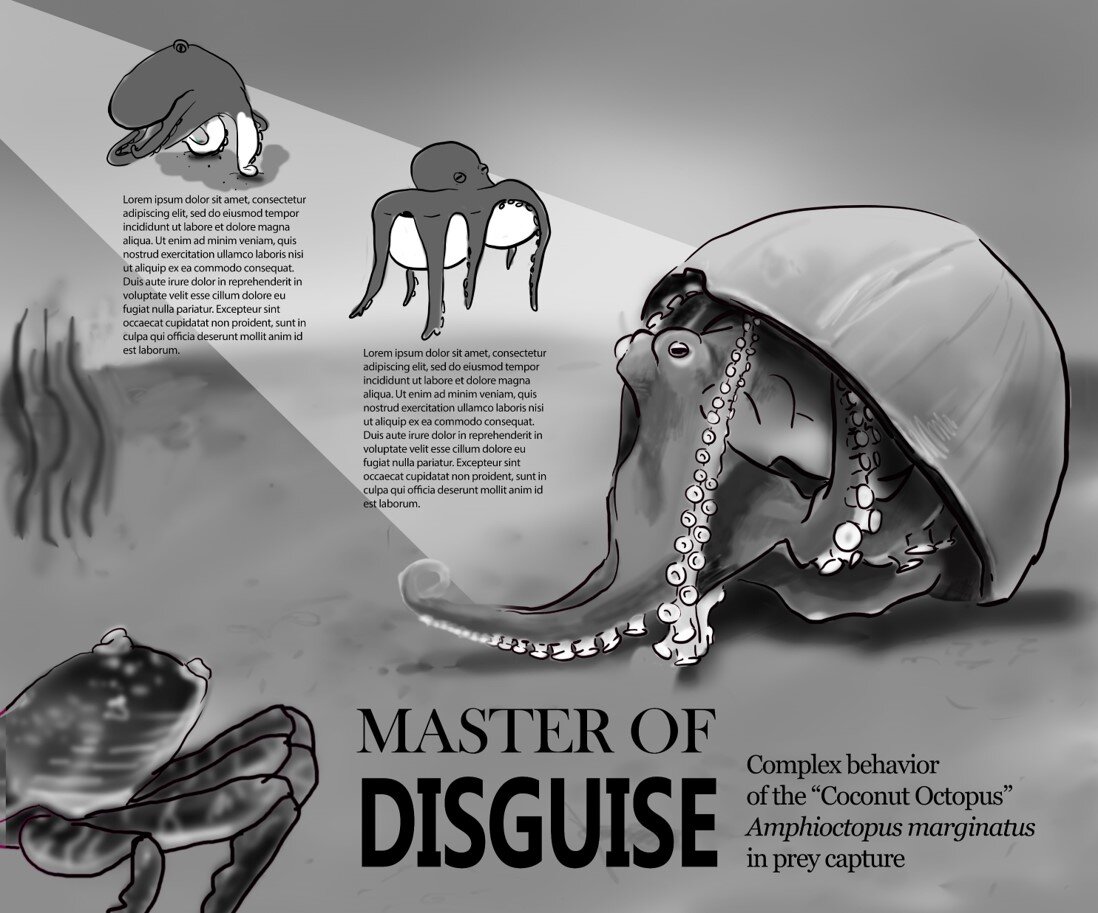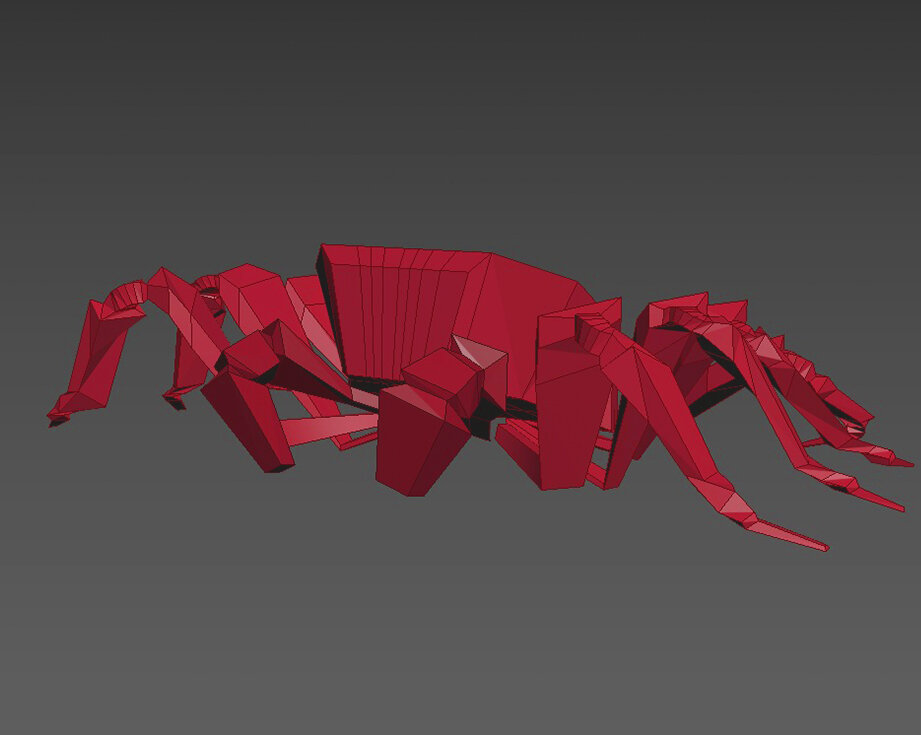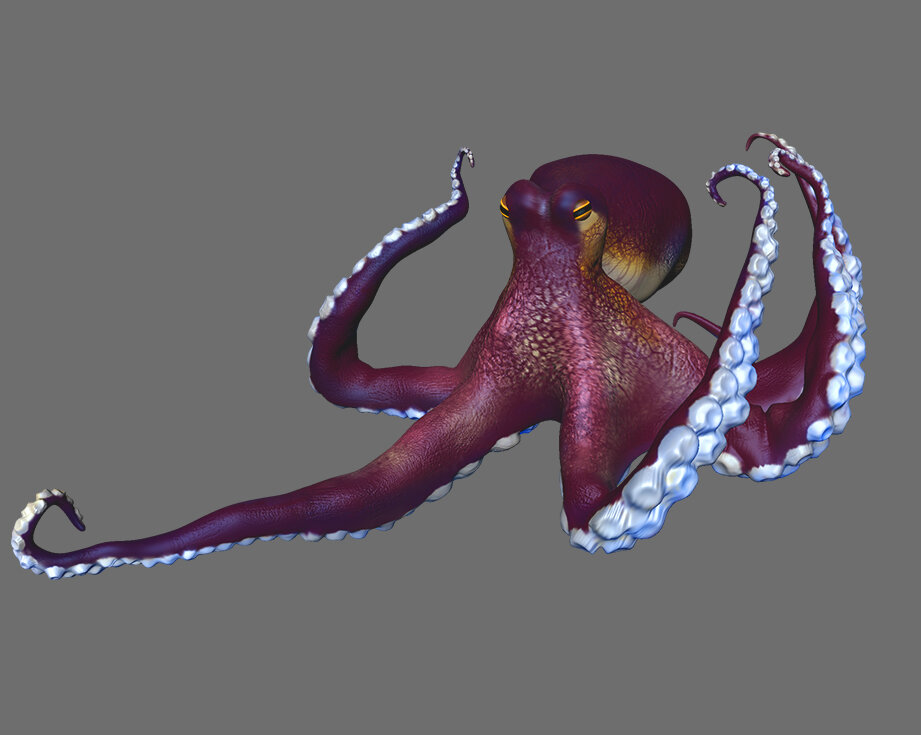Unique Behaviors of the Coconut Octopus
THE CHALLENGE
To use 3-D modeling to visualize a biological defense mechanism of an animal.
THE SOLUTION
This illustration describes the behavioral adaptations that make the coconut octopus a particularly unique species of octopuses: tool-use and bipedal locomotion. The central illustration captures the moment in which a coconut octopus uses a coconut shell as a tool to disguise itself, allowing it to sneak up on an unsuspecting crab.
AUDIENCE
Lay audience
CLIENT
Leah Lebowicz
COMPLETED
May, 2019
MEDIUM
Visual Molecular Dynamics (VMD), Autodesk 3ds Max, Adobe Photoshop, Adobe InDesign
FORMAT
20 x 24 (digital and print)
Process and Development
RESEARCH AND STORYTELLING
While there are many interesting defense mechanisms exhibited by animals, I found the coconut octopus to be a particularly charismatic species. Despite the several fascinating adaptations the coconut octopus exhibits, I decided to focus on the characteristics that make this octopus unique from other ocean dwelling animals. In my initial sketch, I decided to tell this story by capturing the moment of tension between predator and prey, in a theatrical and dynamic compositions.
MODELING
Main assets were box-modeled in Autodesk 3ds Max to quickly capture their form.
Octopus 3ds Max box model
Crab 3ds Max box model
The models were further sculpted, painted, and textured in Autodesk Mudbox. These models were brought back into Audodesk 3ds Max, where lighting and materials were used to enhance the models and hint at a convincing environment. Final compositing was done in Adobe Photoshop, with illustrations completed in Adobe Illustrator, and layout in Adobe InDesign.
Octopus Mudbox model
Crab Mudbox model
Initial render (prior to compositing)







